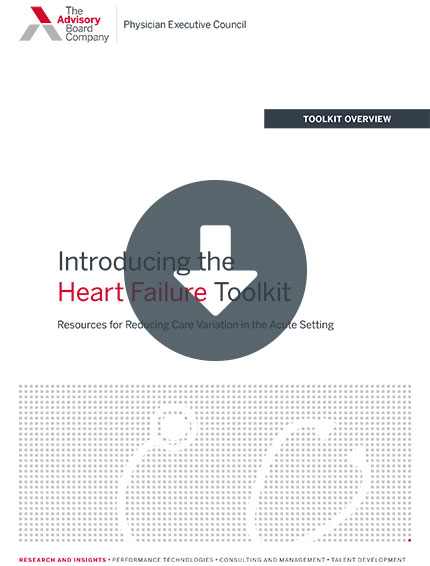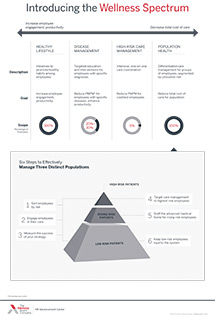Editor's note: This popular story from the Daily Briefing's archives was republished on May 4, 2020.
Read Advisory Board's take: How leading organizations are addressing poor nutrition
Research has shown that ultra-processed foods account for more than half of the average American's diet, and three recent studies offer a clearer picture of how eating large amounts of processed foods may affect your weight, cardiovascular health, and overall mortality risk—and the results aren't great.
Details on the studies
Two of the studies were published Wednesday in BMJ. The other was published earlier this month in Cell Metabolism.
For the studies published in BMJ, researchers used a food classification system called NOVA, which breaks down food into four categories:
- Unprocessed foods, including fruits, vegetables, milk, eggs, and poultry;
- Processed cooking ingredients, including salt, sugar, honey, vegetable oils, and butter;
- Processed foods, including condensed milk, cheeses, cured ham, bread, beer, and wine; and
- Ultra-processed foods, which are foods that contain ingredients you wouldn't cook with, such as colorings, anti-caking agents, and emulsifiers. This category also encompasses ready-to-eat products such as instant soups, cereals, and processed meats.
Increased cardiovascular risk
For one of the studies in BMJ, researchers followed 105,159 French, middle-aged adults for five years and assessed their diet twice a year.
The researchers found that for every additional 10% of a participant's diet that consisted of ultra-processed foods, there was just over a 10% increase in the rate of heart disease, cardiovascular disease, and cerebrovascular diseases. The more unprocessed or minimally processed foods they ate, the lower their risk.
Increased mortality risk
In the second study in BMJ, researchers followed 19,899 Spanish university graduates for a decade and assessed their diet every other year.
The researchers found that the participants who consumed more than four servings of ultra-processed foods per day had a 62% increased risk of death during the study period than those who ate less than two servings per day. The researchers also found that each serving of ultra-processed food was associated with an 18% increase in a participant's mortality risk.
Weight gain
The study published in Cell Metabolism was a randomized controlled trial that involved 20 healthy, stable-weight participants—10 men and 10 women—who lived in an NIH facility for four weeks and were provided meals by researchers.
The participants were randomly assigned one of two diets for a two-week period. One group was given an unprocessed diet consisting of whole or minimally processed foods, such as stir-fried beef with vegetables and fresh fruit, while the other group was given an ultra-processed diet consisting of meals like chicken salad made with canned chicken, jarred mayonnaise, and relish, served on white bread along with canned fruit. The participants then switched diets after two weeks.
The meals in both diets contained the same amount of calories, fats, carbohydrates, protein, sugar, salt, and fiber.
The researchers took detailed metabolic measurements to know exactly how many macronutrients and calories each participant was eating. They also tracked other health markers including blood glucose levels and hormone levels.
The researchers found that the participants on an ultra-processed diet ate an average of 508 more calories per day and gained an average of two pounds in the two-week period. Those on the unprocessed diet, by comparison, lost about two pounds in the two-week period. The researchers found those on the unprocessed diet had higher levels of an appetite-suppressing hormone called PYY and lower levels of the hunger hormone ghrelin than those on the ultra-processed diet, which could explain why they consumed fewer calories.
Discussion
While researchers aren't sure exactly why ultra-processed foods can hurt your health, Mathilde Touvier, a nutritional epidemiologist at the Sorbonne Paris Cite Center of Research in Epidemiology and Statistics Research, and co-author of the French study, said these foods "are often high in saturated fat, calories, sugar, and salt, and low in key nutrients like fiber."
Touvier added that the negative health effects from ultra-processed foods may also come from "the wide range of chemicals and additives found in these foods, ranging from acrylamide, a cancer-causing chemical created when heating processed foods, to the bisphenol A found in a product's packaging."
Meanwhile, Gunter Kuhnle, a biochemist and associate professor of nutrition and health at the University of Reading in the United Kingdom, said the French and Spanish studies were "very well and thoroughly conducted," but criticized their use of the NOVA food classification, which he said is "neither specific nor useful to inform public health or give dietary advice."
He added, "While 'ultra-processed' food is commonly assumed to be food that is extensively processed ... it actually contains foods which undergo few processing steps, such as hamburgers, crisps or chips, or those that contain preservatives that have been used for centuries such as preserves. It is also not obvious why salami is considered to be ultra-processed, yet cheese, which often requires considerably more processing steps and additives, is not."
As for why ultra-processed foods can cause weight gain, David Katz, director of the Yale-Griffin Prevention Research Center, said the randomized controlled trial study found "that people who ate ultra-processed foods tend to eat them faster and that they had lower levels of appetite-suppressing hormones than those who ate whole foods. As a result, they may have ended up eating more in order to feel satisfied."
Ultimately, Mark Lawrence, professor of public health nutrition at Deakin University in Australia, said, you don't have to cut processed foods out of your diet entirely. "[I]t appears that health risks start cropping up once you begin eating more than two servings a day," he said. "Like everything else in life, it's about moderation" (Levine, Consumer Reports, 5/29; Taylor, ABC News, 5/29; Gallagher, BBC News, 5/30; Godoy, "The Salt," NPR, 5/16; Scutti, CNN, 5/30; Fink Huehnergarth, Forbes, 3/14/16).
Advisory Board's take

Tomi Ogundimu, Practice Manager, Population Health Advisor
These new studies reinforce what we already know about the strong link between poor nutrition, an increased risk of obesity, and the development of chronic conditions (like heart disease and Type 2 diabetes). As poor nutrition habits get magnified on a population level, they become one of the leading drivers of death and disability in the U.S., and account for a significant proportion of health care spending.
“For providers, poor nutrition is often an invisible challenge with an outsized impact on patient health”
For providers, poor nutrition is often an invisible challenge with an outsized impact on the health of those diagnosed with, or at-risk of developing, chronic conditions. And providers are beginning to take notice. As we've seen organizations start to think through how to address obesity in their markets, several are honing in on poor diets as an important root cause.
There are two things providers can start doing today to combat poor nutrition among their patient population:
- Reframe nutrition as a health issue. Most people do not think about the interlocking effects that food has on clinical care needs. Yet, by harnessing nutritional education, providers have a real opportunity to improve clinical outcomes.
Several organizations have begun employing an in-practice nutritionist to take patient visits or have used group visits as a forum for educating patients on how to make more healthy decisions at home. For example, Scripps Health in California has developed Project Dulce, an innovative skills-based education program which provides practical guidance on daily activities for managing diabetes. Part of the key to the program's success is that it directly translates in-classroom education to real-world situations. For example, immediately after patients learn key concepts for understanding food labels, they begin to apply these concepts in planning healthy meals.
Download two of Scripps' lessons on reading food labels and the plate method here.
- Help patients more easily access to healthy food. For those living at or near the poverty line, or in food deserts without nearby healthy options, options for quick meals outside of fast food may be limited. To help, providers can launch community partnerships aimed at providing greater patient access to more condition-specific, healthy foods by:
- Making connections to government benefits, e.g., providing SNAP enrollment assistance or having an on-campus WIC office
- Providing vouchers to local farmers markets and other low-cost produce sources
- Launching 'food pharmacies' (i.e., onsite food banks) to where patients can get referrals through 'food prescriptions'
For example, Lankenau Medical Center in Pennsylvania partnered with the nonprofit organization Greener Partners to develop and maintain an on-site farm which provides fresh and free produce to patients in need. To decide where to provide these additional nutritional services, Lankenau used zip codes to identify the most at-risk communities in its service area.
To learn more about how to address poor nutrition and your patients' other non-clinical risk factors, access the slide deck from our recent webinar. We explain how to select the population health interventions that work best for your organization, how to find the right partners, and how to scale your efforts sustainably.
In the meantime, be sure to read our research report on Provider Led Strategies to Address Food Insecurity, which provides 16 action steps to improve patient access to nutrition-reinforced diets.
Don't miss out on the latest Advisory Board insights
Create your free account to access 2 resources each month, including the latest research and webinars.
Want access without creating an account?
You have 2 free members-only resources remaining this month remaining this month.
1 free members-only resources remaining this month
1 free members-only resources remaining this month
You've reached your limit of free monthly insights
Become a member to access all of Advisory Board's resources, events, and experts
Never miss out on the latest innovative health care content tailored to you.
Benefits include:
You've reached your limit of free monthly insights



